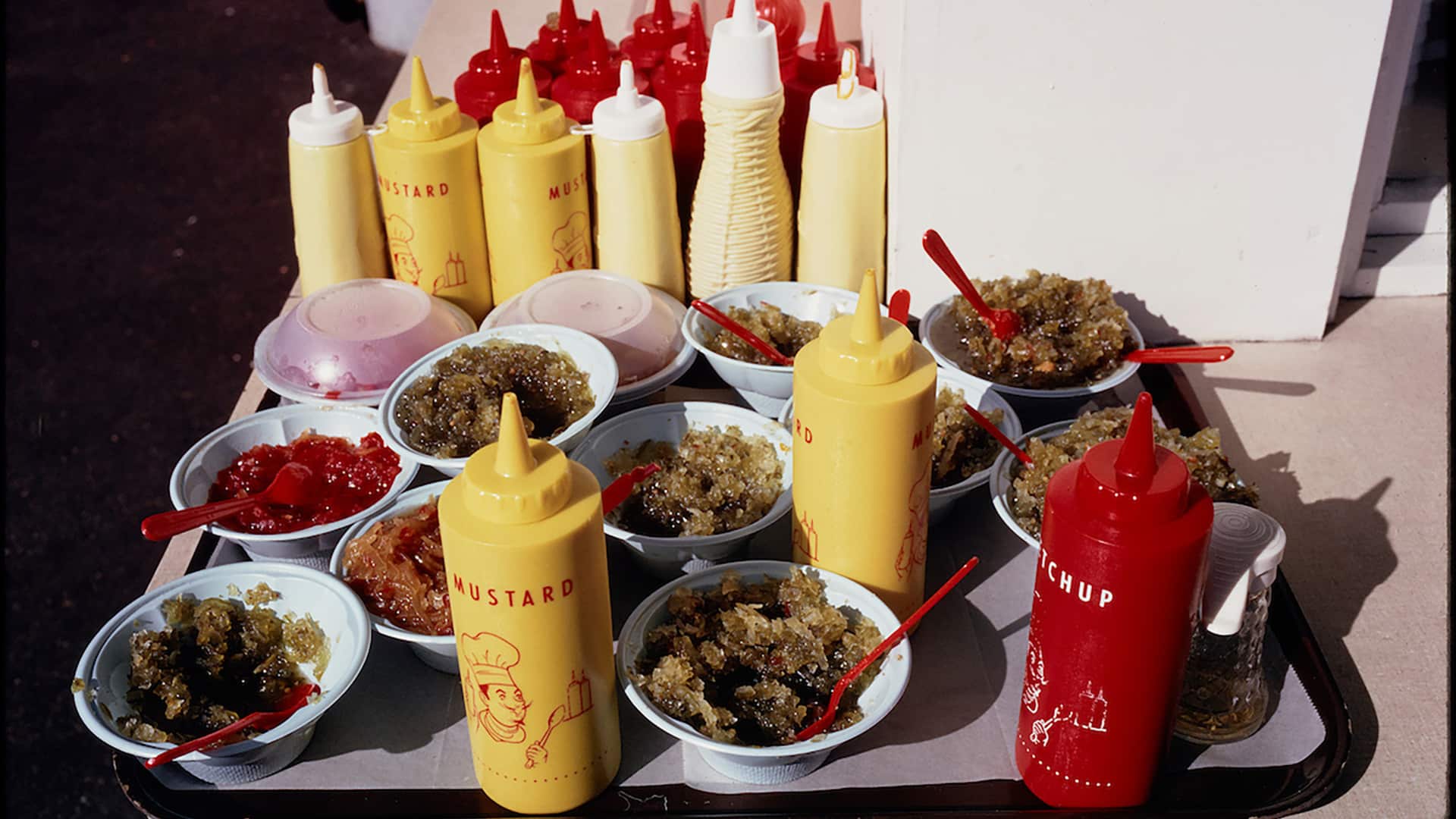
From black & white to color
Winogrand, one of America’s great postwar photographers, is best known for his black and white photographs of New York life. But in reality, Winogrand has left behind more than 45,000 color slides. The fact that they have almost never been exhibited may point to Winogrand’s preference for black and white, but it also reveals an aesthetic choice intertwined with the history of photography. It is worth remembering that color film is not even a century old! Made popular only in the 1930s by Kodak with the release of the Kodachrome film, color photography was for a long time perceived as belonging in the world of publishing and advertising, but not in the world of art. There was also the issue of money. Winogrand produced very few color prints, as he probably lacked the necessary means. From a modest family background, Winogrand, who had quickly abandoned editorial photography, could not afford to be a color photographer, unlike Eggleston for example. But this did not stop him from always carrying two cameras: one with black-and-white film and the other with color film.

The sole objective: to be behind the camera
Winogrand’s first wife explained the matter as follows: being married to Winogrand was “like being married to a purpose.” A prolific photographer, he was more interested in taking pictures than in showing them. The exhibition allows visitors to understand Winogrand’s working process. The central room is divided into eight thematic and chronological slideshows, dating from 1952 to 1967. We discover the photographer’s fascination with the insignificant, the banal, the poetry of everyday life: men hugging each other on the beach, a woman walking down a street, a condiments table, the window of a restaurant… Among Winogrand’s earliest images, the tableaus representing Coney Island convey a sense of tranquility that contrasts with the usual chaos of his black-and-white Manhattan. This is no doubt due to the low speed of the early color film. In the 1960s, armed with the new Kodachrome 60 and X films, Winogrand began to shoot all of New York in color. Visiting the exhibition is like stepping into a time machine and being plunged in Winogrand’s omniscient vision.

The legacy of Garry Winogrand
The slideshows are a tribute to the way Winogrand chose to present his color photographs in New Document. However, any exhibition raises the question of photography’s present-day relevance. For Drew Sawyer, it is a pretext to explore the Brooklyn Museum’s permanent collection (which contains many of Winogrand’s black and white prints) while introducing an element of innovation with Winogrand’s little-known color photographs. Moreover, as Sawyer explains, “in recent years, there has been a new interest in Winogrand’s work, and many young artists today see him as a source of inspiration.”




By Claire Debost
Garry Winogrand: Color
From May 3 to December 8, 2019
Brooklyn Museum, 200 Eastern Parkway, Brooklyn, New York 11238-6052


